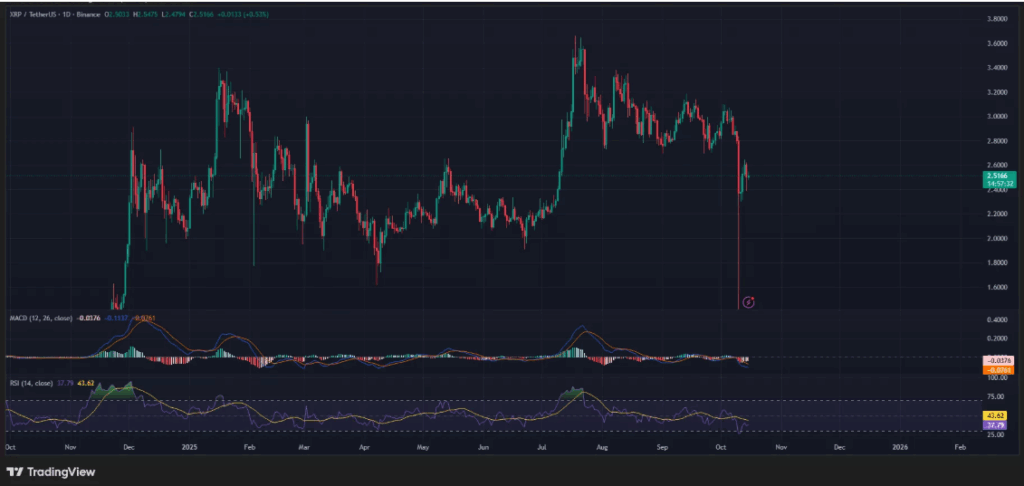Key Insights
- A daily breakdown from the descending triangle places XRP on track toward $1.90 if support fails.
- Whales have offloaded over 2.23 billion XRP since recent U.S. tariff news, intensifying downward pressure.
- Technicals confirm bearish bias: the 20-day SMA now beneath the 50-day, while MACD and RSI slope downward.
XRP plunged after breaking below the base of a descending triangle on the daily chart. That pattern signals sellers are dominating and heightens the chance of further declines. Whales appear to confirm the trend, offloading more than 2.23 billion XRP since the U.S. announced fresh tariffs on Chinese goods.
Markets slipped, reeling from escalating U.S.-China tension and uncertainty over Federal Reserve policy. Investors awaited signals from Fed Chair Jerome Powell with caution. A broader risk-off mood kept sentiment weak across crypto markets.
Technical Signals Align Bearish
The 20-day simple moving average recently crossed below the 50-day SMA, reinforcing near-term negative momentum. Momentum indicators are turning sour: the MACD line slopes down, while the RSI is trending lower. Together, they fortify the case for further downside.

A break below $2.32—the current support zone tied to the 23.6 % Fibonacci level—could trigger acceleration downward. Traders eye $1.90 as a target, a level derived by subtracting the triangle’s height from the breakout point. That zone was also held as support in past tests. On the upside, resistance sits near $2.74. Bulls would need a strong push above that to challenge the downtrend.
Sentiment and On-Chain Confirm Deterioration
Social sentiment, as gauged by on-chain analytics, turned negative from late September. That shift reflects growing pessimism about near-term XRP prospects. Substantial whale selling often spooks retail investors. That dynamic may intensify selling pressure across market participants.
XRP’s confirmation of a bearish chart pattern, aligned with significant whale unloading and a weak macro backdrop, paints a cautious picture. Price risks are tilted to the downside unless a reversal gains traction above resistance.








